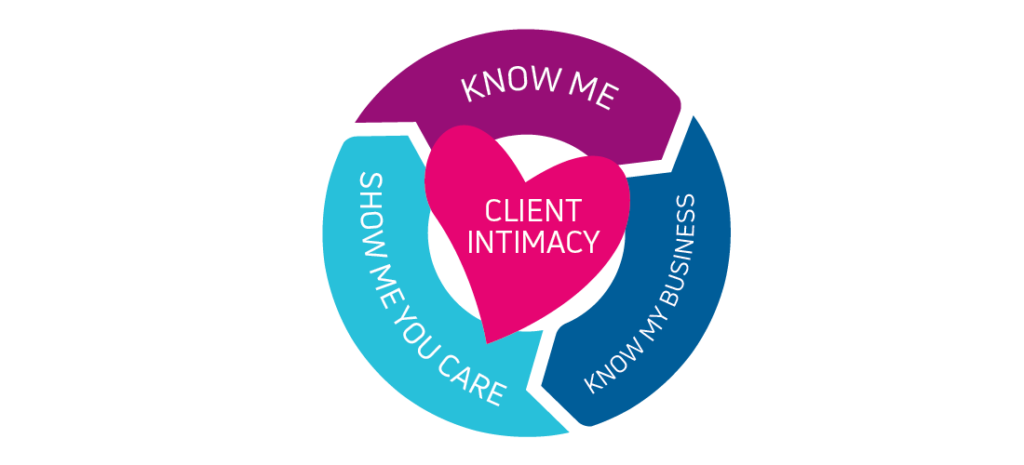It’s interesting how a crisis amplifies the need to change the way you’ve been operating. In a recent conversation with my colleague Gary Magenta, we realized there’s a radical shift occurring in the approach sales professionals are taking in building relationships with their clients.
Before COVID-19, the weather was a consistent topic of conversation at the beginning of sales calls. Since the pandemic hit, I can’t remember the last time the weather came up. Now, calls start in a much more personal and meaningful way. We ask about the well-being of people and their loved ones. We ask each other how this pandemic is affecting our professional and personal lives. We help each other navigate and normalize those awkward moments of household background noise and kids and pets showing up on video calls. This radical shift (that everyone in sales should be paying attention to) means we’ve gone from talking about the weather to talking about life! It’s a shift from exchanging pleasantries to creating intimacy.
Intimacy Deserves a Place in Business
Intimacy? Yes, we understand this word may conjure up images of dimly lit bedrooms or late nights curled up with someone special. So how do we define intimacy? The dictionary definition that most closely describes our meaning is: close familiarity or friendship, closeness of observation, and deep knowledge of a subject. For our purposes, you could say intimacy means having a 360-degree relationship between salesperson and client, one that is both professional and personal.
Today’s salesperson should know their client personally and professionally. They should know their client’s role, their business, and their priorities. Most of all, the salesperson needs to demonstrate that they care. You must create real intimacy if you want to stay relevant.
These days, how many clients have you created true intimacy with? Our guess is fewer than you would like. And which clients are they? Are they the ones who most frequently take your calls? The ones who you know personally and professionally? If your client relationships are not as intimate as you would like them to be, it’s not your fault. What we’ve always been told is important to effective selling has dramatically changed, and it’s happened overnight.

In simpler times client loyalty required good relationships and the ability to differentiate your products and services with great features, benefit, and convenience too. Then along came the need to demonstrate the impact and value your product or service could add. Of course, sharing thought-provoking insights and getting clients to think differently about what they needed to do (to stand out from the competition) is now a priority as well. Finally, sales professionals must also be able to help clients navigate the sea of information so they could choose the right course. And today we have reached the pinnacle, client intimacy, which combines all of these trends with a focus knowing on the client personally and professionally.
We’ve leaned so far in the direction of sales process that it’s sucking all the oxygen out of the room until there’s none left for the kinds of conversations that create intimacy.
You may be thinking: “This all sounds good, but this intimacy thing will disappear once COVID-19 is gone.” Some believe that things will, at some point, go back to normal. However, every crisis creates a new reality in which we find new ways of doing things. Many of those new ways become permanent.
There will be no “getting back to normal.” We’re evolving. If there is one trend that should scare you into taking client intimacy seriously, it’s that businesses are reducing their external partners to a vital few they believe they cannot succeed without. This means they are looking to continue relationships with partners who demonstrate a strong commitment to them. Client intimacy is the best and fastest way to demonstrate that commitment.
Three Key Components to Client Intimacy
We believe there are three key components to developing client intimacy. The good news is that you’re probably already doing some of these, but now you need to be intentional about doing them all – and doing them all well. We have a simple model you can use, along with some questions to ask, that will help you pressure-test your client intimacy capabilities. In the image below, you’ll see the four components we’re talking about.

- Know me.
- Do you know your client personally and professionally? This isn’t just about, say, what school they went to – it’s at least two steps beyond that.
- Do you know the top challenges they’re facing?
- Do you have an informed perspective on the external trends that impact their business and role/department?
- Know my business.
- Do you know their company’s industry and their relative performance in it?
- Are you informed about recent developments that could alter their priorities?
- Do you have an informed perspective on the external trends affecting their business?
- Show me you care.
- When you spend time with your client, is it in service of their agenda and not your own?
- Do you allow them to discuss and problem-solve with you about everything on their plate and not just what’s relevant to your product or solution?
- Have you provided support to them in areas of their life outside the nature of your business relationship?
To be able to answer “yes” to these questions, there are several skills you should evaluate and hone. They are:
- Developing your business acumen. The easiest way to start is to invest time in the Know Me and Know My Business categories.
- Effective questioning and active listening. Ask questions and actively listen so you can identify patterns and themes in your client’s business and clarify your understanding of their current and future states.
- Problem solving. You may already be doing this, but today’s business climate offers an opportunity to go deeper. One way to do that is through systems thinking. Systems thinking allows you to look beyond your client’s wants and needs to the long-term implications and impact of their decisions.
This may seem like a tall order, but investing time here will pay deep dividends in the future. When discussing this with Gary, I had a moment of real excitement when we landed on the idea of developing fewer – but deeper – client relationships because of its potential to transform your life and your client’s for the better.









